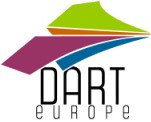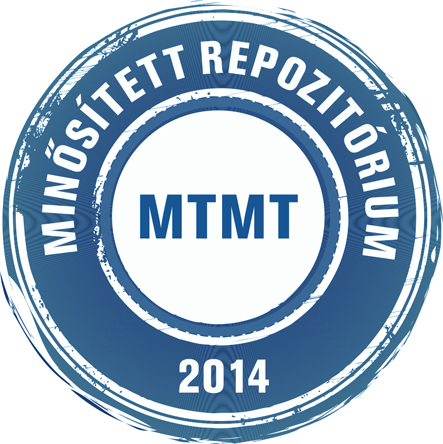Berthon William
Bioarchaeological Analysis of the Mounted Archers from the Hungarian Conquest Period (10th Century): Horse Riding and Activity-Related Skeletal Changes.
Doktori értekezés, Szegedi Tudományegyetem (2000-).
(2019)
(Kéziratban)
Előnézet |
PDF
(tézisfüzet)
Download (442kB) | Előnézet |
Előnézet |
PDF
(disszertáció)
Download (16MB) | Előnézet |
Absztrakt (kivonat) idegen nyelven
In certain conditions, some changes observed on human bones can be related to activities practiced during life. Scholars have considered the reconstruction of activities from skeletal changes in past populations as “Bioarchaeology’s Holy Grail”. Horse riding, in particular, has interested bioarchaeologists and paleopathologists for several decades as it brought profound and lasting changes in the history of human cultural evolution. However, the existence of various confounding factors and the lack of clear contextual evidence in connection with the skeletal remains often result in limited or unreliable interpretations of skeletal changes in terms of specific activities. Archaeological and historical sources attest that tribes of semi-nomadic populations conquered the Carpathian Basin with powerful armies of mounted archers at the turn of the 9th and 10th centuries, which led to the foundation of the Kingdom of Hungary in the year 1000/1001. Cemeteries from that period often provide cases of deposits of archery and horse riding equipment as well as horse bones associated with the individuals in the graves. Those populations are, thus, among the most pertinent to be used to perform methodological investigations on activity-related skeletal changes, and, on horse riding, in particular. We selected a sample of 67 individuals from the 10th-century Hungarian cemetery of Sárrétudvari-Hízóföld, in order to analyze the individuals according to the presence or absence of riding deposit in their grave. A modern comparison group of 47 presumed non-rider individuals from the documented collection of Lisbon was also selected. Only adult males were included to limit the effect of sex and age on the changes. The main objectives were to identify skeletal changes reliably related to the practice of horse riding and to improve our understanding of the populations from the Hungarian Conquest period. Various types of skeletal changes were analyzed, including some entheseal changes (at muscles attachment sites), joint changes, vertebral changes, morphological variants, and traumatic lesions. Measurements of the lower limb bones were also used to calculate indices of shape and robusticity. Statistical analyses mostly revealed significant differences between the Hungarian groups with or without riding deposit and the comparison group from Lisbon. They concerned especially some entheseal changes at the coxal bone, femur, tibia, and calcaneus, a morphological adaptation on the femoral neck, intervertebral disc herniations at the thoracolumbar junction, or the ovalization of the acetabulum on the coxal bone. All these traits can be linked to the riding posture, and, thus, seem to be promising indicators for the practice of horse riding. On another note, comparisons between groups revealed that the Hungarian individuals without deposit in their grave were likely riding horses as well. Among the limitations calling for caution is the restricted size of our archaeological samples, which is one of the points that should be improved in the future. In addition, some skeletal changes, such as the entheseal changes, have a multifactorial etiology, which represents a limitation for their interpretation. In that regard, we performed the exploratory analysis of the microarchitecture of an enthesis, the radial tuberosity. Using micro-CT acquisitions and 3D reconstructions of the canals of the cortical bone, we observed that some microstructural variations could allow, with further research, distinguishing entheseal changes related to activity from those related to other factors, thus contributing to more reliable reconstructions of the activities in past populations. In the end, we emphasize that the selection of a pertinent anthropological collection, with direct evidence of the practice of an activity, and the application of strict methodological criteria, are determinant factors for the reliable identification of activity-related skeletal changes.
| Mű típusa: | Disszertáció (Doktori értekezés) |
|---|---|
| Publikációban használt név: | Berthon William |
| Témavezető(k): | Témavezető neve Beosztás, tudományos fokozat, intézmény MTMT szerző azonosító Dutour Olivier Research Professor, Head of Chair, EPHE, PSL University NEM RÉSZLETEZETT Pálfi György professor, Embertani Tanszék SZTE 10008705 Coqueugniot Hélène Senior Resercher, CNRS NEM RÉSZLETEZETT Révész László professor, Régészeti Tanszék SZTE / BTK 10011682 |
| Szakterület: | 01. Természettudományok > 01.06. Biológiai tudományok |
| Doktori iskola: | Biológia Doktori Iskola |
| Tudományterület / tudományág: | Természettudományok > Biológiai tudományok |
| Nyelv: | angol |
| Védés dátuma: | 2019. december 13. |
| Megjegyzések: | PhD candidate, SZTE/EPHE, PSL University |
| Kulcsszavak: | Biological Anthropology; Bioarchaeology; Paleopathology; Activity-related skeletal changes; Horse riding; Hungarian Conquest period |
| EPrint azonosító (ID): | 10319 |
| A mű MTMT azonosítója: | 31390464 |
| doi: | https://doi.org/10.14232/phd.10319 |
| A feltöltés ideje: | 2019. nov. 08. 14:11 |
| Utolsó módosítás: | 2020. szept. 11. 08:16 |
| Raktári szám: | B 6574 |
| URI: | https://doktori.bibl.u-szeged.hu/id/eprint/10319 |
| Védés állapota: | védett |
Actions (login required)
 |
Tétel nézet |






